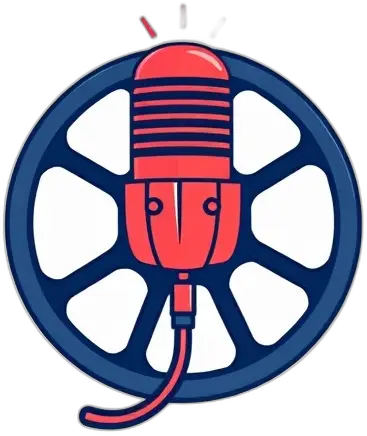Introduction to Comedy
Definition and Evolution of Comedy
What is Comedy?
Comedy, at its core, is a form of expression—spoken, acted, performed, or written—intended to amuse, entertain, and provoke laughter. Historically, comedy has not only provided relief but also mirrored the times, attitudes, and tensions within human societies. This timeless quality spans from ancient Greek theatre to digital memes.
Historical Development of Comedy
Comedy’s roots trace to the festivals of Dionysus in ancient Greece, through Shakespeare’s witty plays, to vaudeville, variety acts, and radio shows. Each era introduced innovations; sketch shows played a pivotal role, shaping modern expectations of comedic television. If you're interested in how televised sketch comedy became a household staple, explore the evolution of sketch comedy on TV.
Key Genres and Forms of Comedy
Over time, comedy branched into various genres—slapstick, dark comedy, satire, absurdism, parody—each using unique devices and targeting audiences in specific ways. For instance, sketch comedy harnesses punchy scenes to deliver quick laughs, often using parodies of current events, as seen in shows like Mad TV’s comedic mastery and influence.
The Importance of Comedy in Culture
Comedy isn’t just about laughter. It’s a powerful conduit for:
- Social and Political Commentary: Comedians have long held up mirrors to society, prompting reflection and change.
- Reflection of Society: The jokes we laugh at represent our values, anxieties, and hopes, serving as a cultural time capsule.
- Therapeutic and Psychological Benefits: Laughter relieves stress and unites people, forging community bonds and easing conflict.
For a deeper look at how comedic genius can spark cultural change, consider Phil Hendrie’s impact as a pioneering comedian who shaped public discussion.
Types and Styles of Comedy
Stand-up Comedy
Origins and Evolution
Stand-up began in music halls and vaudeville stages, evolving through nightclub performances to late-night TV specials. This format relies heavily on a single person’s wit, charisma, and timing.
Famous Stand-up Comedians
Names like Richard Pryor, Joan Rivers, and George Carlin set the standard, inspiring future generations with bold material and sharp observations.
Techniques and Delivery Styles
Successful stand-up involves flawless timing, relatable anecdotes, and punchy punchlines delivered with authenticity. For examples of these techniques in action—and how they translate into audio formats—explore Phil Hendrie’s boundary-pushing characters and delivery.
Sketch Comedy
Definition and Characteristics
Sketch comedy breaks the mold of long narratives in favor of rapid-fire, stand-alone scenes or vignettes, often satirical or absurdist.
Classic and Modern Sketch Shows
From The Carol Burnett Show to Saturday Night Live, sketch comedy has continually evolved, catapulting ensembles into stardom. A must-see example is found in Mad TV’s legendary sketches and lasting legacy.
Notable Sketch Comedy Troupes
Groups such as Monty Python and Key & Peele exemplify how collaboration and improvisation fuel comedic innovation, each troupe stamping its mark on popular culture.
Satire and Parody
Understanding Satire
Satire uses exaggeration and irony to critique social, political, and cultural issues. Unlike parody, satire intends to provoke thought and stir debate.
Parody versus Spoof
Parody mimics another work or genre for comedic effect, while a spoof outright lampoons. Both share roots but different intentions.
Influential Satirical Works
From The Daily Show to MAD Magazine, satirical comedy has influenced generations of thinkers and jokers alike. See how sketch shows blur the line between parody and social commentary in classic Mad TV satires.
Improvisational Comedy
Fundamentals and Techniques
Improv is unscripted and spontaneous, placing the comedian’s reflexes and imagination front and center. The guiding rule: always say “yes, and…” to keep the scene alive.
Popular Improvised Comedy Shows and Groups
Whose Line Is It Anyway? and Chicago’s famed Second City Theatre illustrate the art of live, spontaneous comedy.
Role of Audience Interaction
Improv thrives on real-time audience input, making each performance unique. For a blend of improv and satire, delve into Phil Hendrie’s innovative radio show format.
Comedy in Media and Entertainment
Television
Evolution of Comedy TV Shows
Comedy on television has grown from slapstick-laden sitcoms to complex, serialized comedies exploring deeper themes.
Iconic Comedy Series
From I Love Lucy to The Office, TV’s comedic offerings reflect shifts in society and humor.
Influence on Pop Culture
Television comedies often shape catchphrases, trends, and campy moments remembered for generations. To understand television sketch comedy’s enduring legacy, discover the trailblazing series that changed TV comedy.
Film
Classic and Modern Comedic Films
Charlie Chaplin’s silent films, Mel Brooks’ farces, and Amy Poehler’s contemporary comedies illustrate film’s comedic breadth.
Comedy Subgenres in Film
Films can mix rom-com, slapstick, satire, or gross-out humor—even within single movies.
Notable Comedy Actors and Directors
Bold performers like Lucille Ball and directors like Judd Apatow have each redefined genres with their trademarks. For additional context, explore how uniquely talented comedians translate from stage to screen.
Online Media and Memes
Rise of Digital Comedy
Platforms like YouTube, TikTok, and Instagram foster new comedic talent and viral content almost daily.
Viral Comedy Content
Whether it’s short-form skits, parody songs, or reaction videos, digital comedy evolves at a breakneck pace with global reach.
Role of Social Media in Modern Comedy
Social platforms not only distribute comedy but also shape punchlines, inside jokes, and fandoms around trending content.
Live Comedy Events and Festivals
Stand-up Comedy Tours
Comedians hit the road not just for fame, but for immediate feedback and creative risks less possible on screen.
Comedy Festivals Worldwide
Events like Edinburgh Festival Fringe or Montreal’s Just for Laughs are hotbeds for new talent and genre experimentation.
Audience Engagement and Experience
Live comedy is visceral, with audience reactions often steering performances, creating memorable, dynamic experiences.
Famous Comedians and Their Impact
Legendary Comedians of the Past
Charlie Chaplin’s physical comedy, Richard Pryor’s raw honesty, and Lucille Ball’s mastery of timing laid the foundation for all who followed.
Contemporary Comedy Icons
In recent years, comedians like Dave Chappelle, Ellen DeGeneres, and Kevin Hart have become household names, addressing both personal and societal themes with wit and relatability.
Influencers and Pioneers in Comedy
Comedians often break boundaries, confronting taboos and stereotypes. Their backgrounds—cultural, social, or political—influence the angles they take and the stories they tell.
Consider Phil Hendrie’s pioneering approach to radio and satire, whose expertly-crafted characters and voices challenged the limits of the medium and inspired a wave of imitators and admirers in both radio and podcasting.
The Art and Science of Comedy Writing
Components of a Good Joke
Crafting a good joke is both art and science. Every memorable punchline requires:
- Setup and Punchline: The setup builds anticipation, often using everyday situations. The punchline pivots, subverting expectations and delivering the laugh.
- Timing and Delivery: Even the best joke can fall flat if delivered without proper pacing or confidence.
Crafting Comedy Relief Characters
Whether it’s Kramer in Seinfeld or Dwight in The Office, audience-favorite comedic characters are quirky, consistent, and fill vital narrative gaps. Writers blend physical traits, catchphrases, and recurrent behavior patterns to craft memorable personalities.
Creating Comedic Situations and Sketches
A well-designed sketch or situation draws from real life, exaggerates elements, and weaves them into a format with a clear comedic arc—setup, escalation, and resolution. Comedic sketches often serve as cultural barometers, reflecting and poking fun at contemporary issues, much like those highlighted in Mad TV’s best moments.
Writing for Different Mediums
Comedy writing shifts by form:
- Stand-up relies on direct audience connection and rapid-fire pacing.
- TV and Film allow for more intricate set-ups, visual cues, and character interplay.
- Online Content depends on brevity and shareability, tailored to short attention spans.
Cultural and Social Aspects of Comedy
Cultural Sensitivity and Boundaries
Comedy can push boundaries, but it also risks offending. The best comedians adeptly walk the line, elevating dialogue but rarely punching down. Understanding these nuances is crucial as audience demographics diversify.
Censorship and Freedom of Speech
From banned sketches to public backlash, comedy has always tested the limits of acceptable speech. Each era brings fresh debates over what’s “pushing the envelope” versus “crossing the line.”
Comedy and Social Movements
Comedy can champion causes and chip away at injustice. Whether through satire, parody, or simple one-liners, humor is a stealthy but potent tool for change.
To see how culture shapes jokes—and the thin line between stereotype and celebration—examine examples of Mexican one-liner jokes that straddle the boundary between playful and problematic.
Niche and Subgenre Comedy
Dark and Absurdist Comedy
This style leverages bleak themes and surreal settings to provoke laughter from discomfort, with shows like The Eric Andre Show leading the charge.
Slapstick and Physical Comedy
Physicality, from Chaplin’s antics to Jim Carrey’s elastic face, fuels this timeless comedy. Carefully timed mishaps turn physical pain into guffaws.
Meme and Internet Humor
Internet cultures cycle through memes at lightning speed. Familiar formats get twisted, reinterpreted, and remixed globally in mere minutes.
Slang and Urban Comedy
Comedians adapt rising slang, subcultural references, and hyperlocal humor, keeping material fresh but sometimes impenetrable to outsiders.
Dive into a playful exploration of the absurd with this deep dive on the art of fart jokes and outrageous comedy concepts, which has found a passionate fanbase in surprising corners of the internet.
The Future of Comedy
Trends and Innovations
The next frontier for comedy is digital—virtual reality comedy clubs, AI-driven joke generators, and interactive digital sketches are already making waves.
Challenges Facing Comedians
- Changing Norms: The rapid pace of social change keeps comedians on their toes, ensuring yesterday’s material fits today’s standards.
- Platforms and Monetization: New comedians must navigate ever-evolving algorithms and shifting revenue streams to stay afloat.
Opportunities in Emerging Media
Interactive forms let audiences help shape punchlines and storylines, while streaming services give international humor unprecedented reach.
With innovation comes new genres and evolving tastes—expect to see more niche humor, like that explored in the rise of offbeat and unconventional comedy, finding dedicated digital communities.
Featured Section: Deep Dive into Notable Topics
Mad TV: The Evolution of Sketch Comedy on Television
Mad TV redefined the sketch comedy landscape for a generation, blending celebrity impressions, original characters, biting social commentary, and outrageous absurdism. Its diverse cast broke molds and opened doors for underrepresented voices. Uncover milestone sketches and behind-the-scenes stories in this comprehensive Mad TV retrospective.
Farter Ever: Humor Through Unique and Uncommon Laughter Triggers
Fart jokes: universally relatable, often divisive, and endlessly remixable. “Farter Ever” isn’t just cheap laughs; it’s a study in how lowbrow humor defies boundaries and brings people together. Discover why this comedic subgenre captures imaginations in an exploration of the best of fart humor.
Mexican Jokes and One-Liners: Cultural Humor and Stereotypes
National identity and stereotype play a delicate dance in humor. Mexican jokes and one-liners can both dismantle and reinforce perceptions, depending on context and delivery. Learn how these jokes fit into greater trends—and see curated examples—in this look at Mexican cultural humor.
Phil Hendrie: Pioneering Radio Comedy and Satire
Phil Hendrie’s radio show blurred the lines between host, caller, and character. His innovative performances dissected politics and media, exposing absurdities through fake guests and outlandish scenarios. Delve deeper into Hendrie’s unmatched legacy and hear clips in this profile of a radio icon who shaped modern comedic satire.
Appendages
Profiling Subcultures in Comedy
From the alt-comedy scene in Brooklyn to indigenous comedy collectives, every group brings something different to the world of laughter.
How to Get Started in Comedy
Resources abound for budding comedians: open mics, online tutorials, writing groups, and improv classes. Embracing trial and error is key.
Resources and Training
Today’s aspiring comics can tap into workshops, digital seminars, and international comedy schools—many now available entirely online.
Ethical Considerations in Comedy Production
Humor’s power demands responsibility. Writers and performers increasingly focus on inclusive, ethical comedy that still packs a punch.















